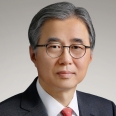During this year’s ROK-U.S. Ulchi Freedom Shield (UFS) military exercise, South Korea also carried out government-led civil defense drills in response to a North Korean nuclear attack scenario for the first time. But the exercise did not consider a situation in which North Korea threatened to use nuclear weapons after seizing and occupying a part of South Korea’s territory. South Korea must be ready to counter the threat of North Korea’s ‘nuclear shadow’ which makes South Korea unable to properly respond to provocations because it feels North Korea’s nuclear threat.
Russia’s threats to use nuclear weapons during its invasion of Ukraine made the United States and NATO member states reluctant to provide large-scale military support to Ukraine. North Korea is closely watching the war in Ukraine and will become obsessed with its own ‘nuclear shadow strategy.’ It is estimated that North Korea will be able to produce fissile material for 300 nuclear warheads by 2030. If this happens, North Korea will be able to use nuclear weapons not only in all-out wars but also use nuclear threats against South Korea and the United States as part of its gray zone conflict to inflict damage through psychological warfare and limited war.
What would happen if, after North Korea launched surprise attacks to seize parts of South Korea, it then made nuclear threats? What if the United States was more concerned with possible escalation into a full-scale war and proposed ending combat operations, even while parts of South Korean territory were still under North Korea’s occupation? North Korea would be emboldened by the success of its ‘nuclear shadow’ and make more frequent nuclear threats against South Korea while seeking to achieve the reunification of the Korean Peninsula under the communist flag.
In this case, North Korea could consider seizing the five islands in the West Sea of Baengnyeong, Daecheong, Socheong, Soyeonpyeong, and Yeonpyeong. North Korea constructed a new hovercraft base near Baengnyeong Island and has deployed new high-speed hovercrafts. These hovercrafts can transport 3,000 troops to the five islands in the West Sea in approximately 30 minutes. If North Korea occupies the five islands and then threatens to use its nuclear weapons, the United States might be reluctant to retake the occupied territories. Meanwhile, China and Russia would likely call for a ceasefire followed by diplomatic talks to resolve the conflict.
Under the cover of night, North Korean Special Operation Forces could also cross the Han River and occupy Gyodong Island, the city of Gimpo, and Ganghwa Island in the western outskirts of Seoul. North Korea has the largest special forces in the world, with around 200,000 troops. North Korea’s nuclear weapons make this scenario of limited war possible. North Korea might also target Ulleung Island in the East Sea, which is currently only defended by a small contingent of Navy personnel and Marines. If North Korea seizes Ulleung Island, the East Sea would be left exposed, potentially cutting off U.S. augment forces deploying to the Korean Peninsula via Japan.
It is inconceivable for South Korea to accept a ceasefire if any part of its territory remained occupied. However, during a speech at the Republican National Convention last July, former U.S. President Donald Trump remarked, “It is nice to get along with somebody who has a lot of nuclear weapons.” This suggests that the United States might be inclined to compromise with North Korea under its ‘nuclear shadow.’
To counter North Korea’s nuclear shadow, South Korea’s first priority should be to strengthen the ROK-U.S. combined operational plans to effectively respond to localized provocations. South Korea and the United States should agree on automatic roll-back operations to re-take any territory seized by North Korea even if it makes ceasefire proposals. If U.S. resolve waivers, South Korea needs to build its own military capabilities to recover seized territories and improve readiness through exercises and training during peacetime. South Korea must focus on the prompt development of the three-axis defense system, which encompasses Kill Chain, Korea Air and Missile Defense (KAMD), and Korea Massive Punishment and Retaliation (KMPR). It should also establish a Conventional-Nuclear Integration (CNI) system that incorporates U.S. nuclear assets.
Since nuclear weapons can be countered only by nuclear weapons, the definitive way to lift North Korea’s ‘nuclear shadow’ is to make absolutely clear the credibility of nuclear retaliation. U.S.-Soviet relations during the Cold War bear witness to this truth. The fear of Mutually Assured Destruction (MAD) ensured that the Cold War ended cold. In order to create a balance of terror and effectively counter various North Korean provocations, the best option is to re-deploy some of the U.S. tactical nuclear weapons that were withdrawn in 1991 back to the Korean Peninsula.
* The view expressed herein was published on August 28 in The Chosun Ilbo and does not necessarily reflect the views of The Asan Institute for Policy Studies.

 Facebook
Facebook Twitter
Twitter